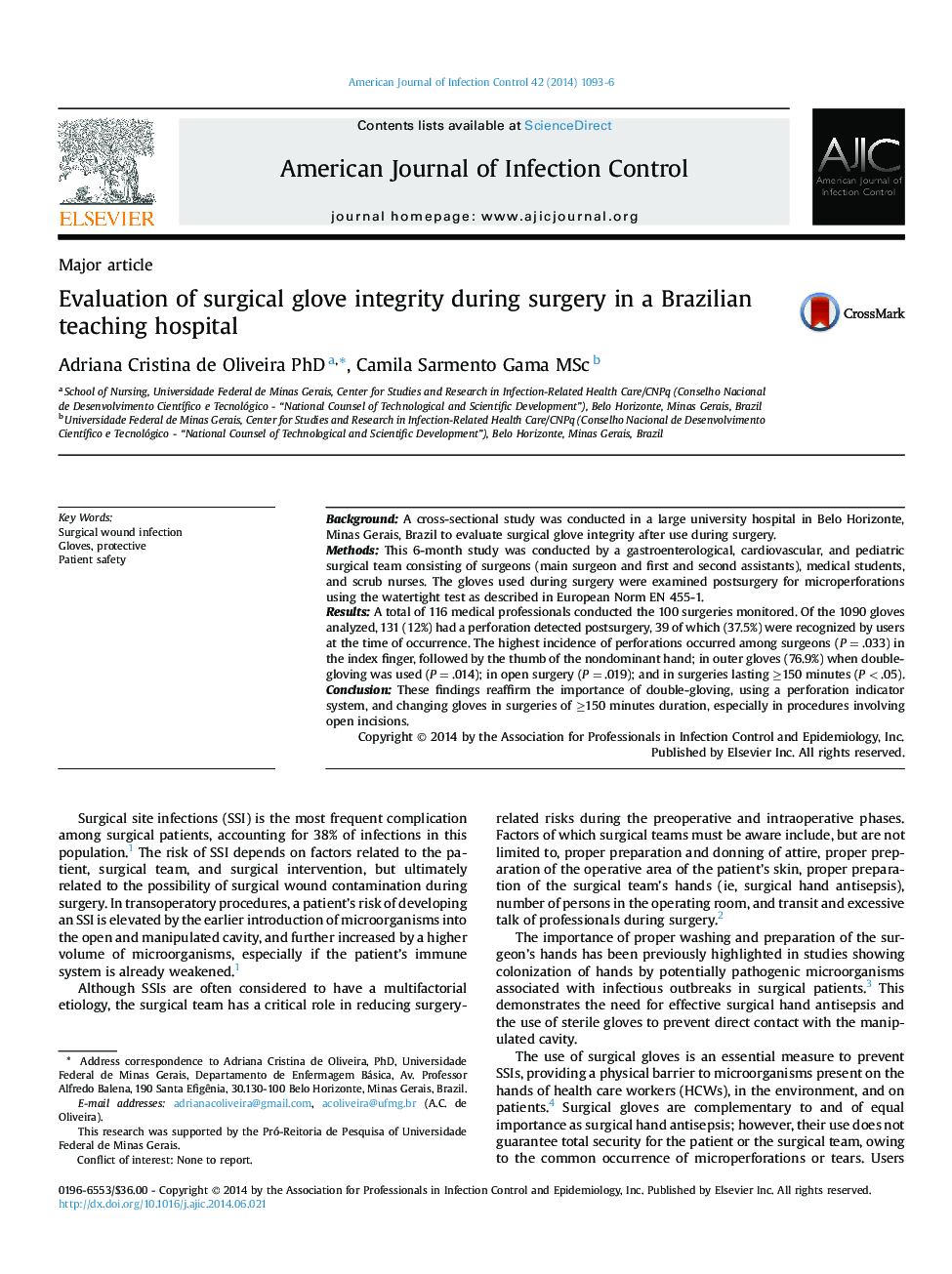| Article ID | Journal | Published Year | Pages | File Type |
|---|---|---|---|---|
| 2636900 | American Journal of Infection Control | 2014 | 4 Pages |
•Surgical glove perforations occurred in 65 (65%) of the surgeries.•Surgeries lasting ≥150 minutes were significantly associated with glove perforation.•Of the 131 total detected perforations, 39 (37.5%) were perceived by the user.•Of the users who had a perforated glove during surgery, 46.2% were main surgeons.•Many perforations were perceived only towards the end of the surgery.
BackgroundA cross-sectional study was conducted in a large university hospital in Belo Horizonte, Minas Gerais, Brazil to evaluate surgical glove integrity after use during surgery.MethodsThis 6-month study was conducted by a gastroenterological, cardiovascular, and pediatric surgical team consisting of surgeons (main surgeon and first and second assistants), medical students, and scrub nurses. The gloves used during surgery were examined postsurgery for microperforations using the watertight test as described in European Norm EN 455-1.ResultsA total of 116 medical professionals conducted the 100 surgeries monitored. Of the 1090 gloves analyzed, 131 (12%) had a perforation detected postsurgery, 39 of which (37.5%) were recognized by users at the time of occurrence. The highest incidence of perforations occurred among surgeons (P = .033) in the index finger, followed by the thumb of the nondominant hand; in outer gloves (76.9%) when double-gloving was used (P = .014); in open surgery (P = .019); and in surgeries lasting ≥150 minutes (P < .05).ConclusionThese findings reaffirm the importance of double-gloving, using a perforation indicator system, and changing gloves in surgeries of ≥150 minutes duration, especially in procedures involving open incisions.
